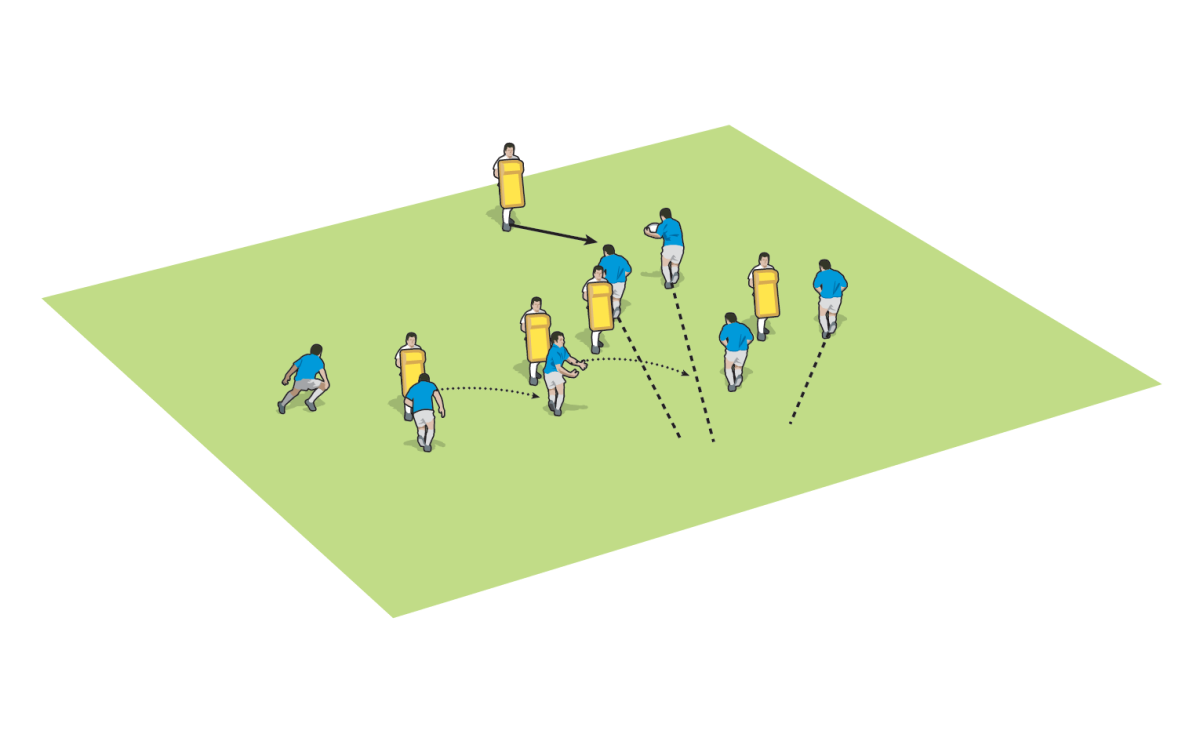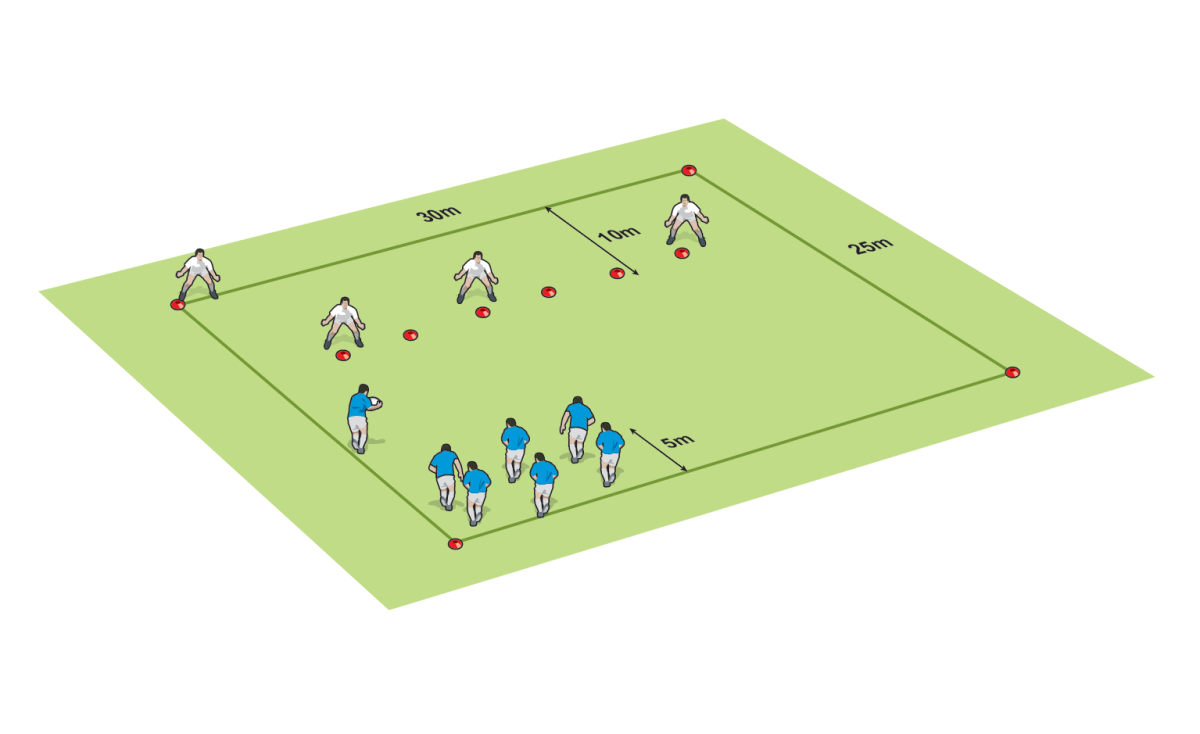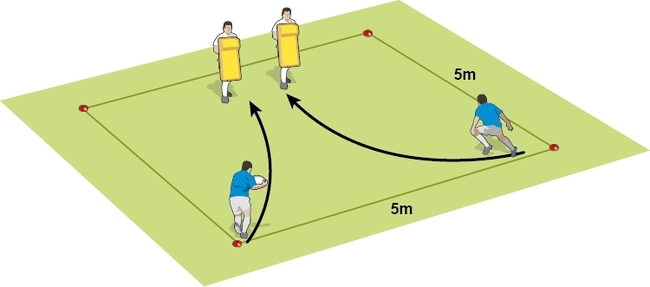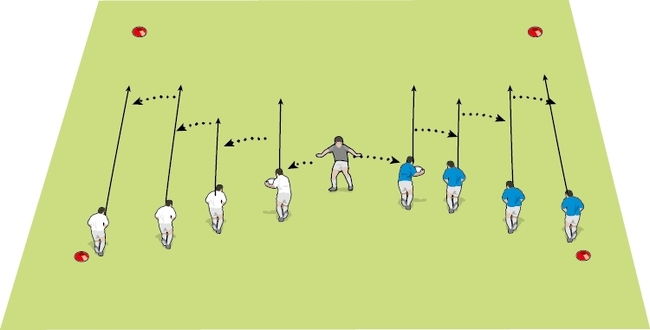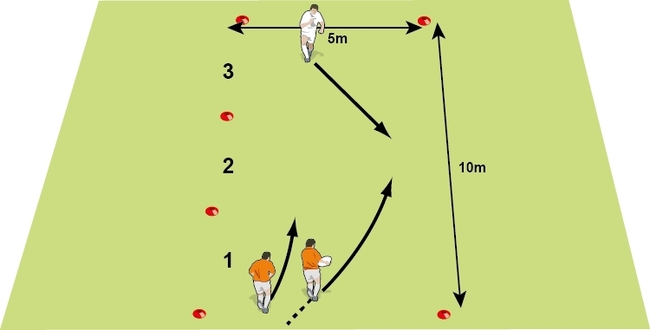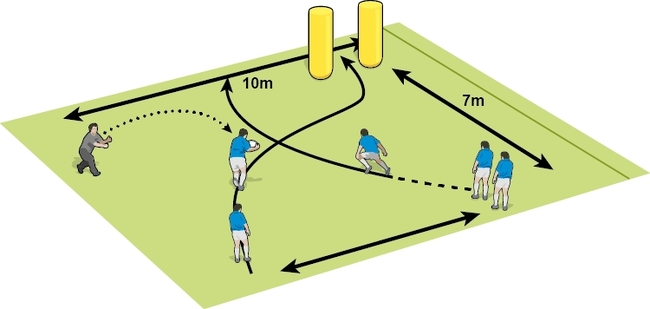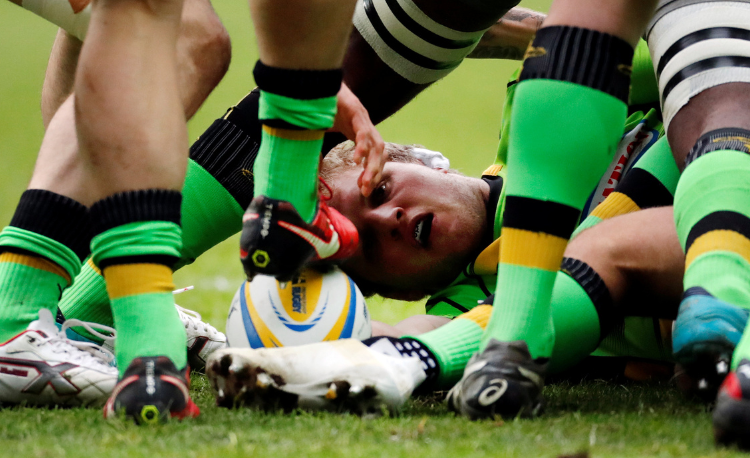Flood support
Encourage support players to be ready to follow the ball carrier through the line break, either to take an offload or, if there is a clean break, to take the next pass.
WHY USE IT
Line breaks can be anywhere along the defensive line. This creates scenarios for the players to react and support.
Set up
Five ruck pads and a ball, then a 30m by 25m long box, with a ball and cones.
HOW TO PLAY
ACTIVITY: Put four pad-holders about 10m away from two lines of three attackers. A further ruck pad-holder starts about 10m behind the line of pad-holders. The ball is fed from the side into the attackers, who aim to break through the ruck pads. If a player takes a heavy impact from a pad, they offload. If not, they pass soon after the break, with the attack looking to fix the final ruck pad-holder to score.
GAME SITUATION: Set up four defenders and six attackers as in the bottom illustration. Arrange the defenders in different combinations across the cones – tight, spread, all to one edge, and so on. Using full tackling, the attackers have to score at the far end without resorting to a ruck or maul.
COACHING POINTS
- Ball carrier: Attack the tackle line hard. If you half break, look for an offload. If you fully line break, look to pass early, because you are the focus.
- Support players: Offer options by running in behind the ball carrier or running angles flat to the ball carrier.
- Keep in the game by running in, then away, from the ball carrier and potential line breaks – you need to offer alternatives.
-
Two lines of three attackers are ready to go forward
-
Put four ruck pad-holders in the front line. A further pad-holder is 10m behind the front line
-
A ball is fed to the attackers
Related Files
- A heavy contact with a ruck pad should lead to an offload
- If they break through, they aim to fix and beat the final defender
- The defence is either spread or tight
- Six attackers aim to score at the far end
Newsletter Sign Up
Coaches Testimonials

Gerald Kearney, Downtown Las Vegas Soccer Club

Paul Butler, Florida, USA

Rick Shields, Springboro, USA

Tony Green, Pierrefonds Titans, Quebec, Canada
Subscribe Today
Be a more effective, more successful rugby coach
In a recent survey 89% of subscribers said Rugby Coach Weekly makes them more confident, 91% said Rugby Coach Weekly makes them a more effective coach and 93% said Rugby Coach Weekly makes them more inspired.
Get Weekly Inspiration
All the latest techniques and approaches
Rugby Coach Weekly offers proven and easy to use rugby drills, coaching sessions, practice plans, small-sided games, warm-ups, training tips and advice.
We've been at the cutting edge of rugby coaching since we launched in 2005, creating resources for the grassroots youth coach, following best practice from around the world and insights from the professional game.

